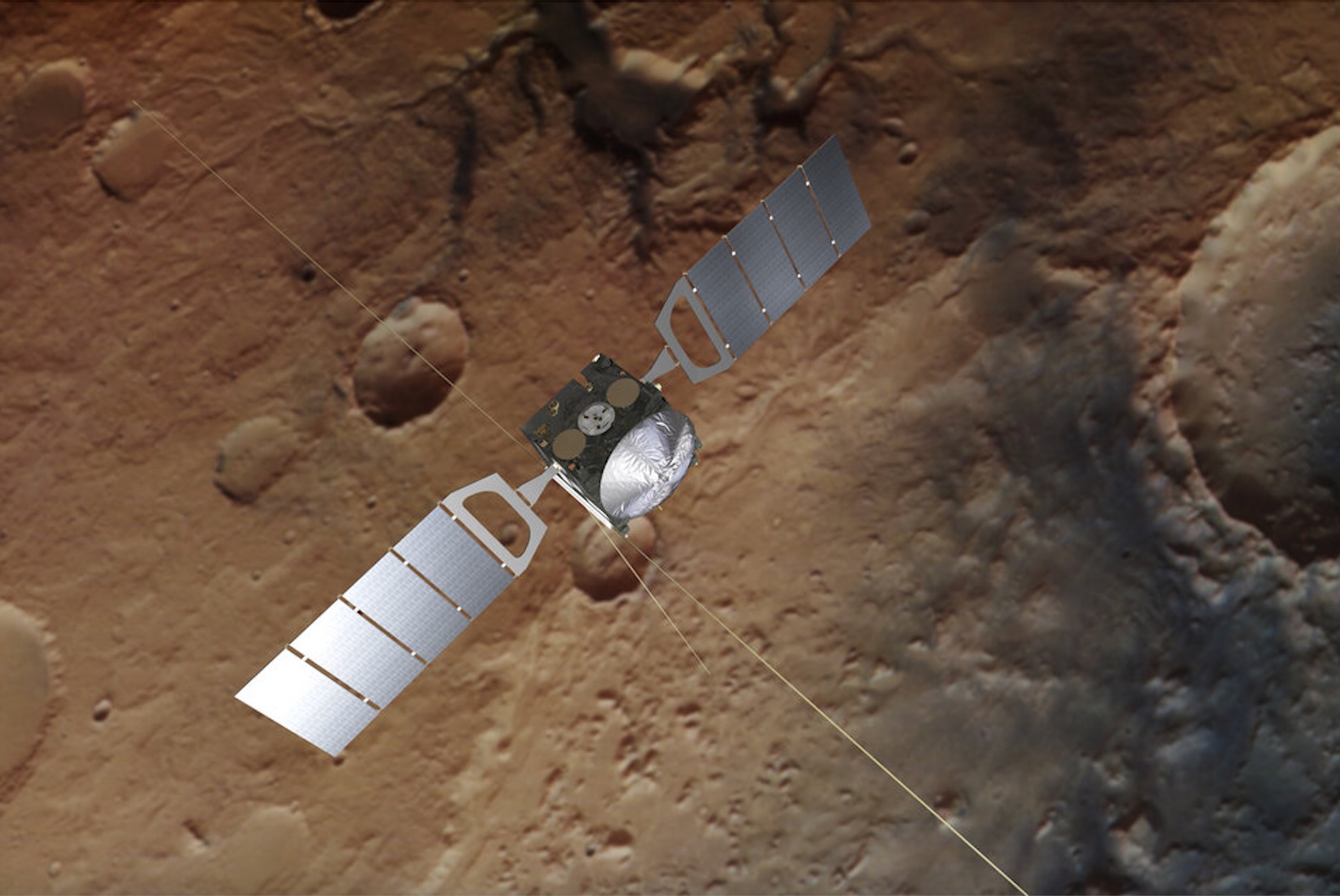Update for 2:45 p.m. ET: ESA's livestream from the Mars Express Orbiter has concluded. Read our wrap story here.
The European Space Agency (ESA) will livestream imagery from its Mars Express orbiter in near-real time today (June 2), and you can watch it live.
The event, held to celebrate the 20th anniversary of Mars Express' launch, will begin today at 12 pm EDT (1600 GMT) and last an hour. Watch it live here at Space.com, courtesy of ESA, or directly via the space agency.
"This will be the closest you can get to a live view from the Red Planet," ESA officials said in a statement.
Mars Express' images will get to Earth today 18 minutes after they're snapped, if all goes according to plan, they added. It will take 17 minutes for them to get to our planet from Mars, then another minute or so to make it through servers and wires on the ground.
Related: Red Planet photos by Europe's Mars Express spacecraft

Mars Express launched with a lander called Beagle 2 on June 2, 2003. The duo arrived in orbit around the Red Planet on Christmas Day of that year.
Get the Space.com Newsletter
Breaking space news, the latest updates on rocket launches, skywatching events and more!
Beagle 2 touched down on Mars that same day but never phoned home, apparently because one or more of its four solar panels failed to deploy properly and ended up blocking the lander's communications antenna.
Mars Express, however, got up and running as planned, studying the Red Planet in detail with seven different science instruments.
The orbiter has accomplished a great deal during its two decades away from Earth. For example, it detected methane in the Martian atmosphere, mapped the composition of ice near the planet's poles and spotted a possible subsurface lake near Mars' south pole. And Mars Express is still going strong, as today's event shows.
The livestream will showcase images snapped by the probe's Visual Monitoring Camera (VMC), which was originally designed to monitor the separation of Beagle 2. Once it did that, the VMC was turned off — but it was turned back on in 2007 to snap imagery for education and outreach activities, and for science work as well.
"We developed new, more sophisticated methods of operations and image processing, to get better results from the camera, turning it into Mars Express' eighth science instrument," VMC team member Jorge Hernández Bernal said in the same statement.
Mars Express team members have spent the last few months preparing for today's livestream — for instance, developing the tools needed to get the VMC photos online as soon as possible.
Don't be surprised if there are a few hiccups, however.
"This is an old camera, originally planned for engineering purposes, at a distance of almost 3 million kilometers [1.8 million miles] from Earth — this hasn’t been tried before and, to be honest, we're not 100% certain it'll work." James Godfrey, spacecraft operations manager at ESA's mission control center Darmstadt, Germany, said in the same statement.
"But I’m pretty optimistic," he added. "Normally, we see images from Mars and know that they were taken days before. I'm excited to see Mars as it is now — as close to a Martian 'now' as we can possibly get!"
Join our Space Forums to keep talking space on the latest missions, night sky and more! And if you have a news tip, correction or comment, let us know at: community@space.com.

Michael Wall is a Senior Space Writer with Space.com and joined the team in 2010. He primarily covers exoplanets, spaceflight and military space, but has been known to dabble in the space art beat. His book about the search for alien life, "Out There," was published on Nov. 13, 2018. Before becoming a science writer, Michael worked as a herpetologist and wildlife biologist. He has a Ph.D. in evolutionary biology from the University of Sydney, Australia, a bachelor's degree from the University of Arizona, and a graduate certificate in science writing from the University of California, Santa Cruz. To find out what his latest project is, you can follow Michael on Twitter.









